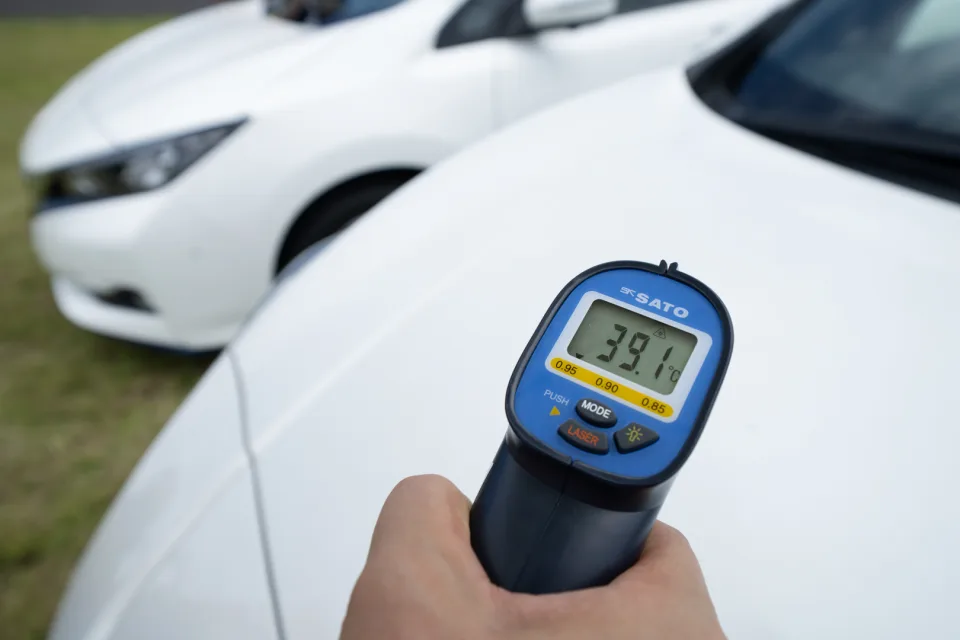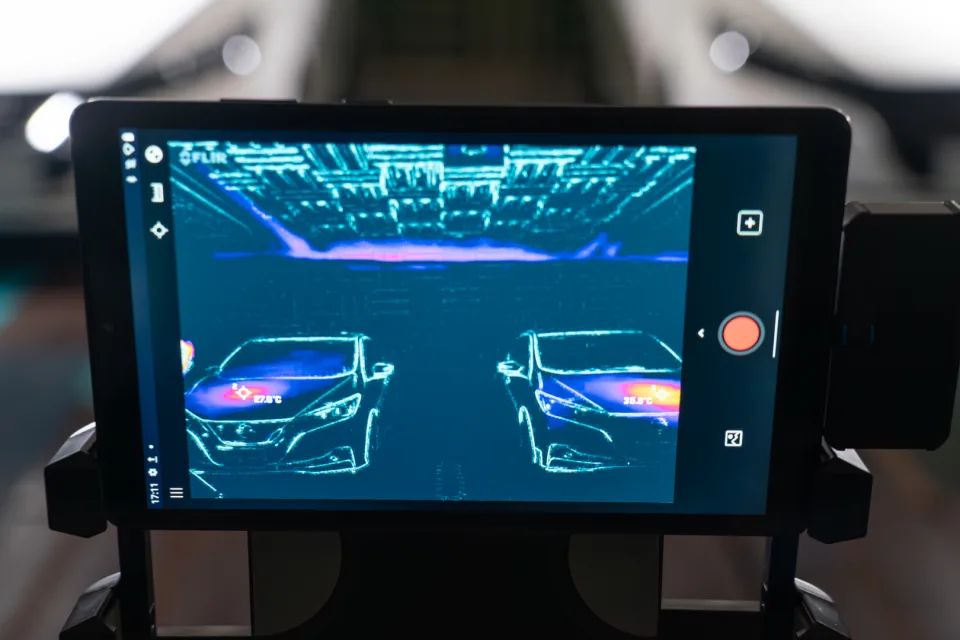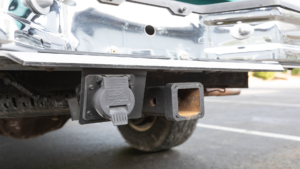Nissan’s Innovative ‘Cool Paint’ Aims to Keep Cars Almost 10 Degrees Cooler

Nissan is making strides in vehicle comfort with the development of a novel “cool paint” designed to reduce interior temperatures. This innovative coating is poised to significantly improve driving experiences, particularly in sweltering climates.
Table of Contents
The introduction of this advanced paint comes at a critical time, as Japan faces unprecedented heat waves. Nissan has been rigorously testing this technology at Tokyo’s Haneda airport, an ideal location due to its abundance of unshaded areas. The results are promising, with cars sporting the cool paint feeling noticeably cooler to the touch.
How It Works
Nissan’s technology is not just about surface appearance. The paint reduces roof-panel temperatures by 22 degrees Fahrenheit (12 degrees Celsius) and interior temperatures by 9 degrees Fahrenheit (5 degrees Celsius ). This reduction is achieved through the paint’s ability to reflect sunlight and create electromagnetic waves that block and redirect solar energy.

The Science Behind Cool Paint
The secret to Nissan’s new cool finish lies in its unique composition. The coating incorporates two specific microstructure particles. One of these particles reflects near-infrared rays, which typically cause molecular vibrations, generating heat. The second particle creates electromagnetic fields that counteract the sun’s rays, effectively redirecting the energy back into the atmosphere.
Unlike traditional thermal coatings, which are thick and cumbersome, Nissan’s is designed to be much thinner. Traditional thermal paints can be up to 800 microns thick, whereas Nissan’s coating can be applied in layers as thin as 120 microns. This thin application is possible because the paint can be sprayed onto the car, making it far more practical for automotive use. Additionally, this paint can be covered with a clear top coat, providing protection from scratches, rock chips, and other environmental damage.
Advantages and Collaborations
The potential benefits of this technology are extensive. Cooler cars reduce the need for air conditioning, which in turn can lower fuel consumption for internal combustion engines and extend the range for electric vehicles. This development aligns with broader industry efforts to improve energy efficiency and environmental sustainability.
Nissan’s innovation in cool paint technology is a collaborative effort with Radi-Cool, a Chinese company specializing in heat-cutting films, fabrics, and coatings. Radi-Cool has a history of working with various Japanese firms to develop cooler-feeling products, such as hats and sun parasols. This partnership marks Nissan as the sole Japanese automaker teaming up with Radi-Cool.

Potential Drawbacks
While the technology is promising, it is not without its challenges. One of the significant potential downfalls of Nissan’s cool paint is its cost. Developing and applying this specialization is likely to be more expensive than traditional automotive paints. This increased cost could make it less accessible to the average consumer and may limit its initial market reach.
Another issue is the paint’s thickness. Even though it is thinner than most thermals, it is still several times thicker than standard car paints. This additional thickness could add to the vehicle’s weight, potentially impacting fuel efficiency and performance. Nissan is actively working on varying the thickness and application methods to mitigate these concerns.

Potential Benefits
Despite these challenges, the potential benefits of the cool finish make it a worthwhile investment. Nissan’s long-term vision includes creating cars that remain cool without consuming additional energy. By reducing the reliance on air conditioning, especially in electric vehicles, this technology can play a crucial role in enhancing vehicle efficiency and reducing environmental impact.
Nissan’s cool paint also holds promise for broader applications. If the technology proves successful in cars, it could potentially be adapted for use in other areas, such as public transportation, construction, and even consumer products. The collaboration with Radi-Cool opens the door for further innovations and advancements in cooling technologies.
Paving the Way for a Cooler Future
Nissan’s new development represents a significant leap forward in automotive technology, promising a more comfortable and energy-efficient driving experience. As the company continues to refine and test this paint, the future of cooler cars without the need for extra energy looks increasingly promising. The journey from concept to commercialization may be challenging, but the potential rewards make it an exciting endeavor for Nissan and its partners.









